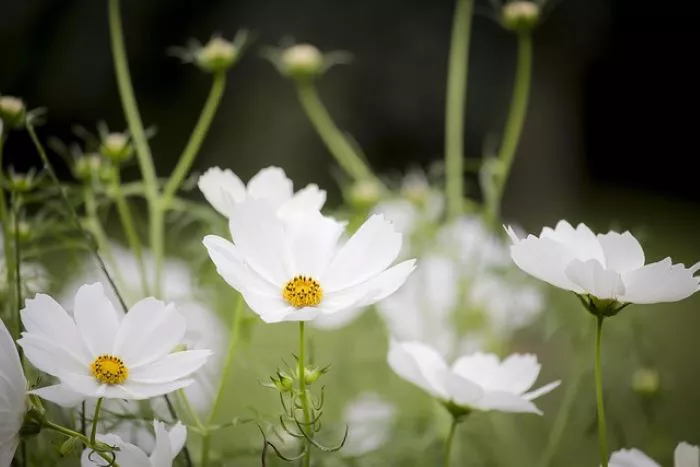Wildflowers are often associated with sunny meadows and open fields, but many beautiful species thrive in shaded areas. These wildflowers play a crucial role in forest ecosystems and shaded gardens, providing color and supporting local wildlife. Understanding which wildflowers grow well in shade can help gardeners and nature enthusiasts create vibrant, low-maintenance landscapes. This article explores various wildflowers that thrive in shaded conditions, their characteristics, and tips for successful cultivation.
Understanding Shade Conditions
Shade can vary significantly in intensity and duration. It is essential to understand the type of shade in your garden or landscape when selecting wildflowers.
Full Shade: This condition occurs in areas that receive less than three hours of direct sunlight each day. Full shade is often found under dense tree canopies or on the north side of buildings.
Partial Shade: This condition receives between three to six hours of sunlight daily. Partial shade is common in areas with some overhead tree cover or structures that block sunlight for part of the day.
Dappled Shade: This type of shade occurs when sunlight filters through leaves, creating a mix of light and shadow. Dappled shade is often found in woodlands where trees allow some light to penetrate.
Understanding these conditions will help you choose the right wildflowers for your specific environment.
Wildflowers That Thrive in Shade
Numerous wildflower species thrive in shaded areas. Here are some of the most popular and attractive options.
Trillium (Trillium spp.): Trillium is a perennial wildflower known for its distinctive three-petaled flowers. These plants bloom in early spring, often in shades of white, pink, or red. Trilliums prefer rich, moist soil and thrive in full to partial shade, making them ideal for woodland gardens.
Virginia Bluebell (Mertensia virginica): This lovely wildflower produces clusters of bell-shaped, blue flowers that bloom in early spring. Virginia bluebells prefer moist, well-drained soil and thrive in partial to full shade. They are often found in woodlands and along stream banks.
Woodland Phlox (Phlox divaricata): Woodland phlox is a perennial wildflower with fragrant, star-shaped flowers that bloom in shades of blue, purple, or white. This plant prefers moist, well-drained soil and thrives in partial shade. It is an excellent choice for naturalizing in woodland gardens.
Wild Ginger (Asarum canadense): Wild ginger is a low-growing perennial that features heart-shaped leaves and unique, cup-like flowers that are often hidden beneath the foliage. This plant thrives in full shade and prefers moist, well-drained soil. Wild ginger is an excellent ground cover for shaded areas.
Jack-in-the-Pulpit (Arisaema triphyllum): This intriguing wildflower features a unique flower structure that resembles a hooded pulpit. Jack-in-the-pulpit thrives in rich, moist soil and prefers full to partial shade. It is commonly found in woodlands and can add an exotic touch to shaded gardens.
Columbine (Aquilegia canadensis): While columbine is often associated with sunny gardens, it can also thrive in partial shade. This perennial produces delicate, nodding flowers in shades of red, yellow, and blue. Columbine prefers well-drained soil and can be a charming addition to shaded areas.
Bleeding Heart (Dicentra spectabilis): Bleeding heart is a perennial wildflower known for its heart-shaped flowers that dangle from arching stems. This plant prefers partial to full shade and thrives in rich, moist soil. Bleeding heart blooms in spring and adds a romantic touch to shaded gardens.
Lungwort (Pulmonaria spp.): Lungwort is a low-growing perennial with attractive spotted leaves and clusters of small flowers that bloom in early spring. It thrives in partial to full shade and prefers moist, well-drained soil. Lungwort is an excellent choice for ground cover in shaded areas.
Solomon’s Seal (Polygonatum spp.): Solomon’s seal is a perennial wildflower with arching stems and delicate, bell-shaped flowers. This plant thrives in full to partial shade and prefers rich, moist soil. Solomon’s seal adds elegance to shaded gardens with its graceful foliage.
Hepatica (Hepatica acutiloba): Hepatica is an early-blooming wildflower that produces delicate flowers in shades of blue, purple, or white. This perennial thrives in partial to full shade and prefers well-drained, moist soil. Hepatica is often found in woodlands and adds beauty to spring gardens.
Cultivating Shade-Tolerant Wildflowers
Successfully growing wildflowers in shaded areas requires careful planning and attention to the specific needs of each species.
Site Preparation: Before planting, prepare the site by removing weeds, rocks, and debris. Loosen the soil to improve drainage and aeration. Adding organic matter, such as compost, can enhance soil fertility and moisture retention.
Selecting the Right Species: Choose wildflowers that are well-suited to your specific shade conditions. Consider factors such as soil type, moisture levels, and the amount of sunlight the area receives.
Planting Techniques: Plant wildflower seeds or seedlings according to the specific requirements of each species. Follow the recommended spacing and depth for planting. For seeds, lightly cover them with soil and water gently.
Watering: Keep the soil consistently moist, especially during the establishment phase. Once established, many shade-tolerant wildflowers are more resilient to drought conditions.
Mulching: Applying a layer of mulch can help retain soil moisture, suppress weeds, and maintain a consistent soil temperature. Organic mulches, such as shredded leaves or bark, can also improve soil quality as they decompose.
Monitoring Growth: Regularly check the growth of your wildflowers. Remove any weeds that may compete for nutrients and water. If necessary, thin out crowded plants to ensure healthy growth.
Patience and Observation: It may take time for wildflowers to establish themselves and bloom. Be patient and observe the changes in your shaded garden throughout the seasons.
Conclusion
Wildflowers that thrive in shade can bring beauty and diversity to gardens and natural areas. By understanding the specific needs of shade-tolerant wildflowers and selecting the right species for your environment, you can create a vibrant and sustainable landscape. These wildflowers not only enhance the aesthetic appeal of shaded spaces but also support local wildlife and contribute to ecological health. Whether you are a gardener or a nature enthusiast, incorporating shade-loving wildflowers into your landscape can provide lasting enjoyment and ecological benefits.


